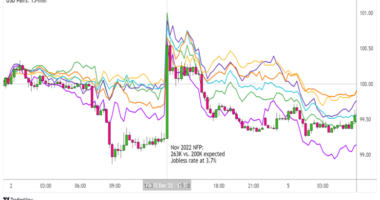The British pound takes the top spot this week on positive data from the U.K. and as lockdowns ease, while the Kiwi dollar fell on broad risk aversion sentiment.
Notable News & Economic Updates:
Risk-Off vibes

It was a risk-off kinda week in the financial markets, sparked by mixed economic data from China and crypto market dips thanks to Elon Musk sparking fears of Tesla unloading its bitcoin holdings. Gold continued it’s recent upward move on these vibes, and the equity markets moved lower as well.
The rest of the week was a lot of the same as the negative news flow seemed to outweigh the news of improving covid conditions (e.g., India’s virus cases decline, Fauci says Covid infections are decreasing in all 50 states) and better-than-expected economic updates.
Traders seemed to be focused more on the rising inflation fears narrative that’s been driving the markets for weeks, as well as fresh headlines from governments signaling potential tax hikes, including comments from U.S. Treasury Secretary Janet Yellen on higher taxes, stronger unions, and more competition that sent markets lower on Tuesday.
On Wednesday, risk-on traders got a big kick in the pants, first driven by the massive sell-off / liquidation in the crypto markets sparked by “China’s cryptocurrency warning,” with additional fuel for the fire coming from the FOMC meeting minutes that signaled the Fed may take taper in their upcoming meetings.
The currency markets was relatively tame compared to the equity and crypto markets, with volatility staying low and most major pairs trading under a 1% range. The big winner of the week was the British pound, benefiting from the trifecta of improving economic updates, reduced lockdown protocols and counter currency weakness.
As for the biggest loser, that crown goes to the Kiwi dollar despite no major headlines from New Zealand. It’s likely that the Kiwi was a victim of the bears, partly due to weakness in broad risk sentiment (it’s generally viewed as the higher “risk” currency among the majors), and possibly on the weakness we saw from Australia’s economic calendar, a typical behavior scenario given the close relationship between the two countries.
USD Pairs

GBP Pairs

EUR Pairs

CHF Pairs

CAD Pairs

NZD Pairs

AUD Pairs

JPY Pairs

This post first appeared on babypips.com








